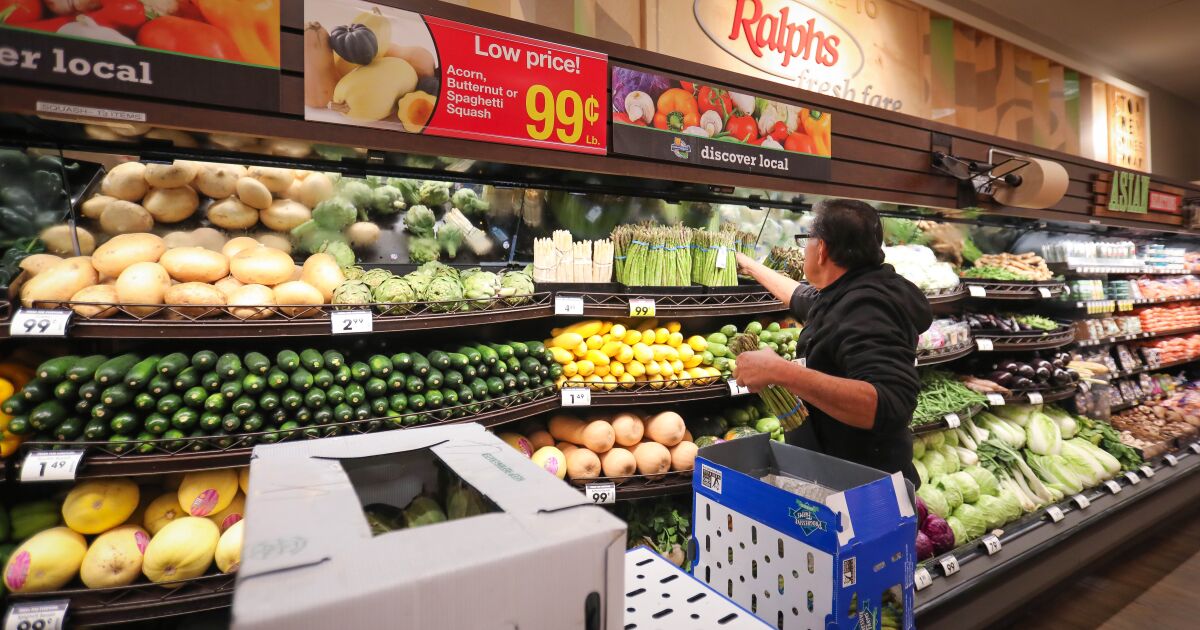this merger is gonna be the ultimate test to see if America is pro corporation monopolies or against it, this is one merger that would be bad for all parties, it would cause more food deserts in most places, and would lead to price gouging to control the market, and also with all mergers, jobs will be lost because of consolidation of 2 companies into 1 which means layoffs for underperforming parts of the company that they can afford to remove as part of merger.
That assumption is potentially wrong in two areas.
First, the traditional food chains are being severely impacted by Amazon and Walmart, with the latter now the largest food chain in dollar sales and the price setting. In many cases, the traditional grocers can not get the pricing and shipping economies that Walmart can, and can´t match the model of Amazon.
Second, there is in grocery a rather specific ratio of staff to sales volume. Even if the chains are consolidated, they will hope to retain all the customers and that does not allow for any savings. The big economies of scale are in purchasing, warehousing and distribution. There, two companies are buying separately, shipping and stocking separately and duplicating efforts.
In many areas, warehousing and shipping can be consolidated with more efficient buying, storing and delivery to stores. This is the one area where there may be staff reduction but the benefits of cutting the number of fuel-hungry trucks makes up for this
in short, if the merger is approved, the clear way to get it approve is to spin off the regional brands of the 2 chains under new companies that aren't run by them as well as sell some stores to other independently owned regional chain to avoid having a monopoly like for an example, in North Texas, HEB and Brookshire's could buy the stores and take a chunk of the North Texas market for grocery stores (HEB is trying to expand into North Texas and Brookshire's tried to expand their market into North Texas being a grocery chain that serves Texas, Louisiana & Arkansas (but briefly in the 2000s expanded to 4 stores in Mississippi only to leave it after failing in that state) and pretty much gave up on the Metroplex stores and got out of there and focuses on areas east of the DFW metro area that are still in the DFW region like in Hunt & Hopkins counties)
The consolidation will require that stores from each brand line that are too close to each other... "down the block"... will be eliminated by sale or closure.
The specialty brands, such as Pavillions in some areas like California will remain as that is an "upscale" brand with large specialty sections.
The reason for regional brands remaining under those brands is market equity where the brand is known, its image is positive and the store is well located.
There are multiple tiers in the grocery industry based on assortment and pricing, ranging from primarily basics and family sizes in lower income areas of a market to boutique brands that are bigger and have more premium items and gourmet foods, including huge wine departments, a deli, more prime fresh meats and seafoods, etc.
Further, every store allocates facings (number of shelf inches and shelf height) based on the demand in each location. In ethnic areas, less "meat and potatoes" and more tortillas and rice (or whatever matches the local ethnic population) will get facings.
I can drive just about 3 miles between two Ralph's (a Kroger brand in CA) and find in one a small area of about 6 horizontal feet in width of Mexican items placed where they are next to Chinese and other ethnic specialties. In the nearby Ralph's, in a zone that is over 80% Mexican and Mexican American, there are two aisles of Mexican foods, including multiple areas of both corn and grain tortillas, many kinds of chili sauce, etc. I can even get imported Peñafiel mineral water, and a variety of fresh and packaged Nopal cactus. And the pastry section is half an aisle wide, with fresh pastries being made in dozens of "named" styles like "cuernos" all day long.
So they really can not consolidate or eliminate brands. The store names reflect lots of tradition and strong imaging. The product mix is designed to match the local tastes and in many areas the staff will be bilingual, speaking English and Spanish or Armenian or Farsi or Chinese or Tagalog or Russian or whatever depending on the ethnicity of the service area.
So chains don't serve "areas" specifically... they serve neighborhoods. And they use sophisticated computer models to stock each store differently depending on the local client base.
In Puerto Rico, which one might think of as being a rather unified zone in questions of foodstuffs, there is a wide variety of individual store assortments based on the income levels of each zone with some areas being more like a middle class mainland US store, and others being wildly local in brands and products.


